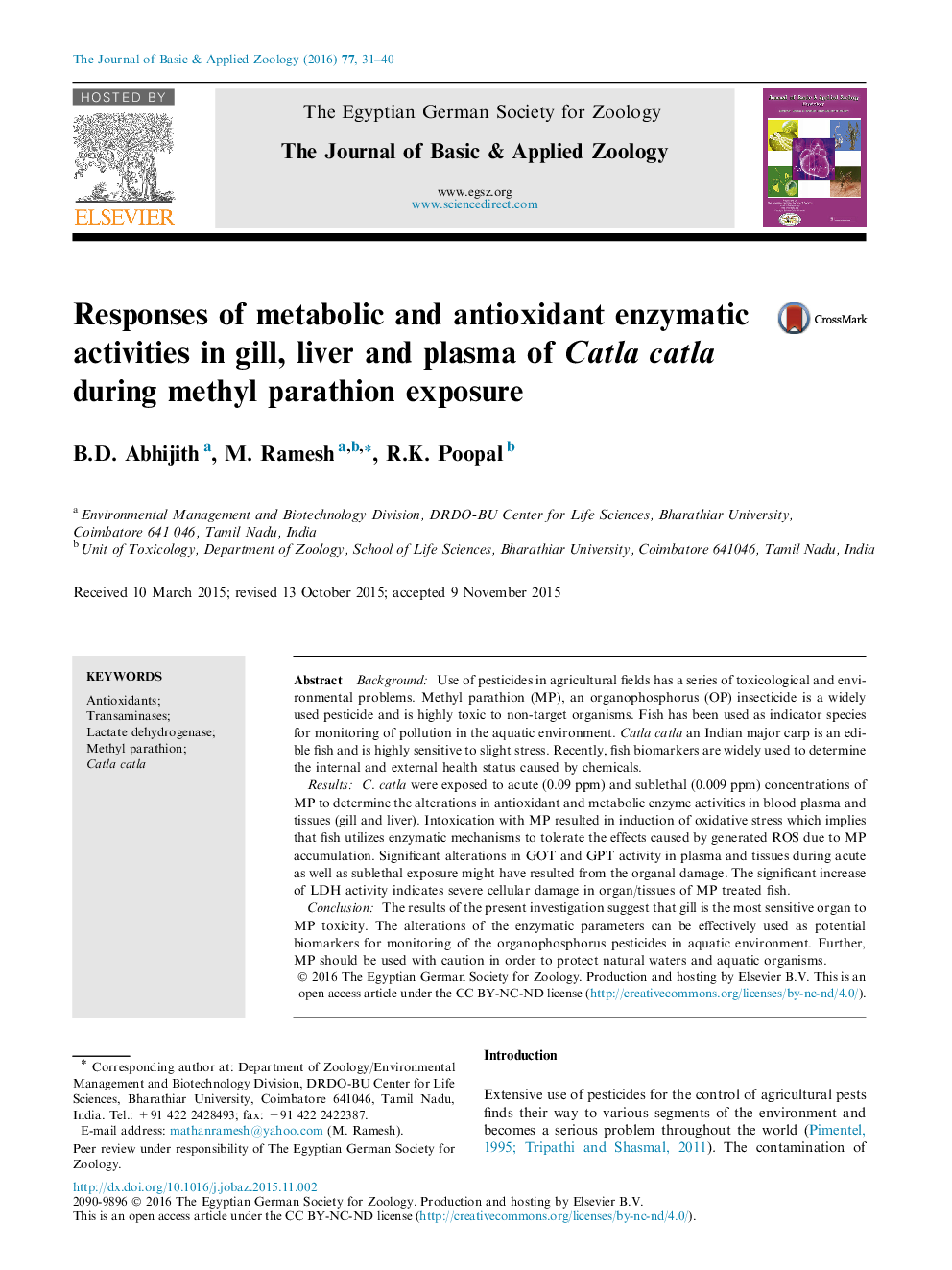| Article ID | Journal | Published Year | Pages | File Type |
|---|---|---|---|---|
| 4493376 | The Journal of Basic & Applied Zoology | 2016 | 10 Pages |
BackgroundUse of pesticides in agricultural fields has a series of toxicological and environmental problems. Methyl parathion (MP), an organophosphorus (OP) insecticide is a widely used pesticide and is highly toxic to non-target organisms. Fish has been used as indicator species for monitoring of pollution in the aquatic environment. Catla catla an Indian major carp is an edible fish and is highly sensitive to slight stress. Recently, fish biomarkers are widely used to determine the internal and external health status caused by chemicals.ResultsC. catla were exposed to acute (0.09 ppm) and sublethal (0.009 ppm) concentrations of MP to determine the alterations in antioxidant and metabolic enzyme activities in blood plasma and tissues (gill and liver). Intoxication with MP resulted in induction of oxidative stress which implies that fish utilizes enzymatic mechanisms to tolerate the effects caused by generated ROS due to MP accumulation. Significant alterations in GOT and GPT activity in plasma and tissues during acute as well as sublethal exposure might have resulted from the organal damage. The significant increase of LDH activity indicates severe cellular damage in organ/tissues of MP treated fish.ConclusionThe results of the present investigation suggest that gill is the most sensitive organ to MP toxicity. The alterations of the enzymatic parameters can be effectively used as potential biomarkers for monitoring of the organophosphorus pesticides in aquatic environment. Further, MP should be used with caution in order to protect natural waters and aquatic organisms.
